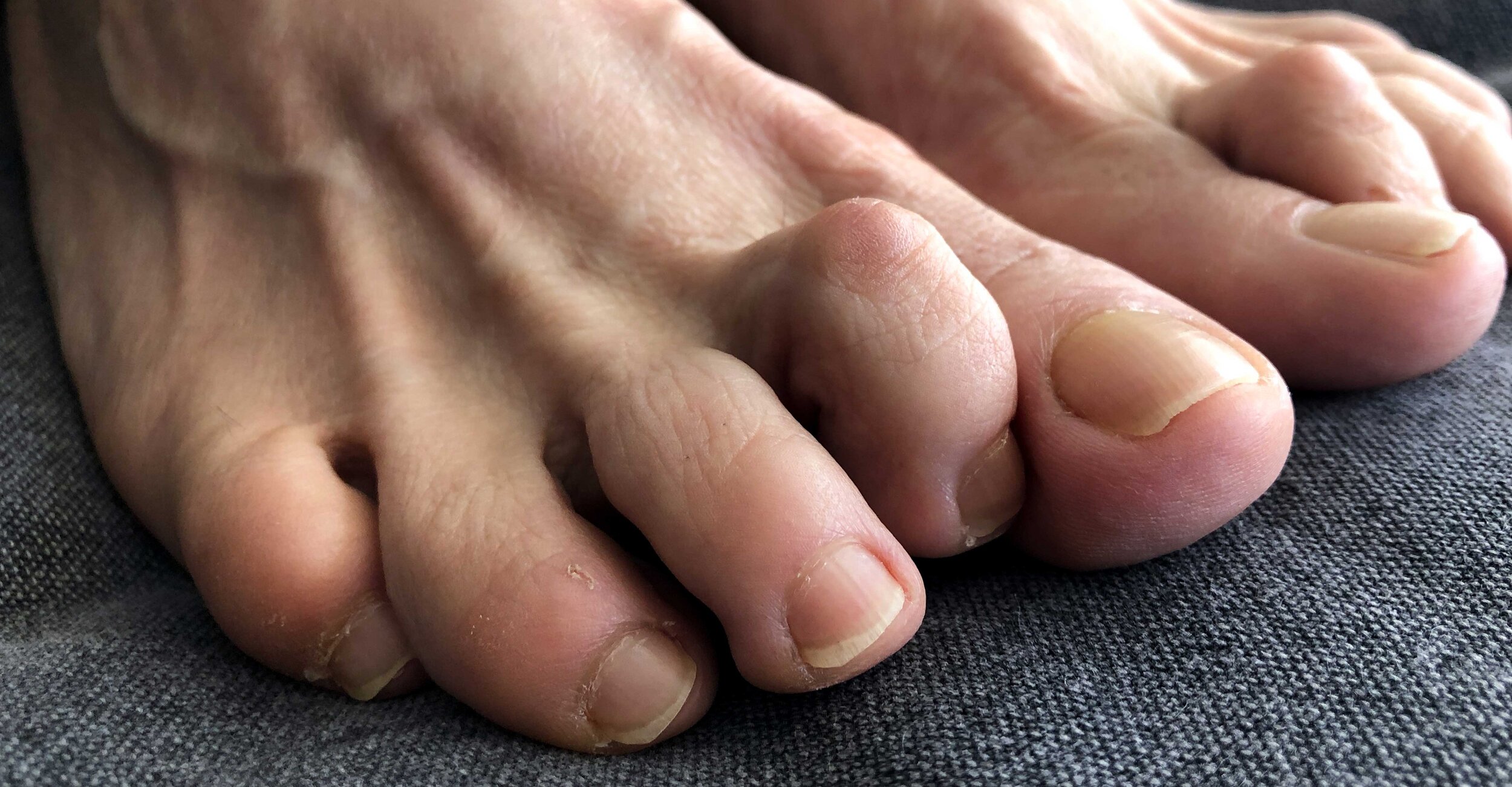
Hammertoe
A hammertoe is a contracture or bending. Of one or both joints of the second, third, fourth or fifth toe. This abnormal bending can put pressure on the toe and may result in pain.
Hammertoes usually start out as mild deformities and progressively worsen over time. In early stages, hammertoes are flexible, and the symptoms can often be managed with non-invasive measure. If left untreated, hammertoes may become more rigid and will not respond to non-surgical treatment. Calluses are more likely to develop as the hammertoe progresses and may never go away, even with trimming. In more severe cases of hammertoes, open sores may form.
Due to the progressive nature of hammertoes, they should receive early attention. Hammertoes never improve without some form of intervention.
You’re more likely to develop hammertoe and other foot deformities if you have certain diseases, such as diabetes and arthritis. Further, some people have a foot structure that makes them more prone to developing certain problems. For example, you’re more likely to develop hammertoe if your second toe is longer than your big toe.
Sometimes, hammertoe doesn’t cause symptoms beyond a change in appearance to the affected toe. However, you may experience significant pain or difficulty walking. When left untreated, hammertoe may make it impossible to bend the affected toe at the joint.
Hammertoe also increases your risk of developing additional foot problems, including corns, calluses, and bunions.
Signs and Symptoms
Pain or irritation of the affected toe when wearing shoes
Callus on the top, end, side or bottom of the toe, caused by constant friction against the shoe.
Non-Surgical Treatment
There are a variety of treatment options for hammertoes. The treatment recommended will depend upon the severity of your hammertoe and other factors.
Trimming of corns and calluses: This should be performed by a healthcare professional. Never attempt to do this yourself as you run a risk of cuts and infection.
Padding: Dr. Hanawalt may provide or prescribe padding and orthotics to reduce pressure and irritation. Medicated over the counter pads are not recommended because they may contain a small amount of acid that can be harmful to skin.
Changes in shoe gear: Avoid shoes with pointed toes, shoes that are too short, and high heels as these will force your toe against the front of the shoe. Instead, opt for comfortable shoes with wide and deeper toe box without heels.
Medications: Non-steroidal anti-inflammatories (NSAIDs), such as ibuprofen, are often prescribed to reduce pain and inflammation.
Splinting and strapping: This treatment may be applied by Dr. Hanawalt to realign the bent toe.
Surgical Treatment
In some cases, usually when the hammertoe has become more rigid, surgery is needed to relieve pain and discomfort caused by the deformity. Dr. Hanawalt will discuss the options and select a plan tailored to your foot.
The most common surgical procedure performed to correct a hammertoe is called an arthroplasty. Dr. Hanawalt will remove a small section of bone from the affected joint to allow relaxation of the toe. For some patients a fusion of the joint is required for stability, this may require a pin in the toe to hold the position of the toe during healing.
The length of recovery will vary based on the procedure performed.